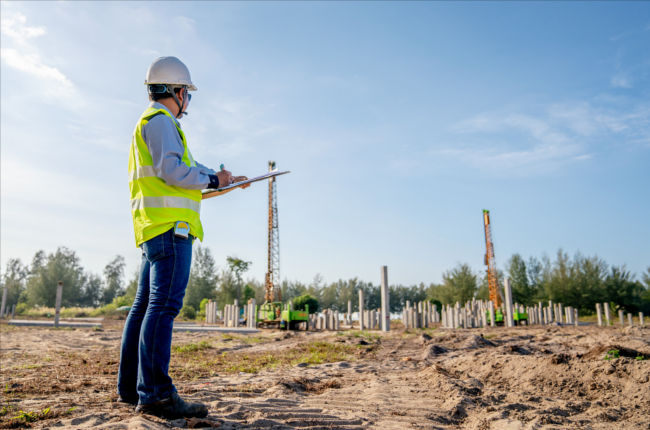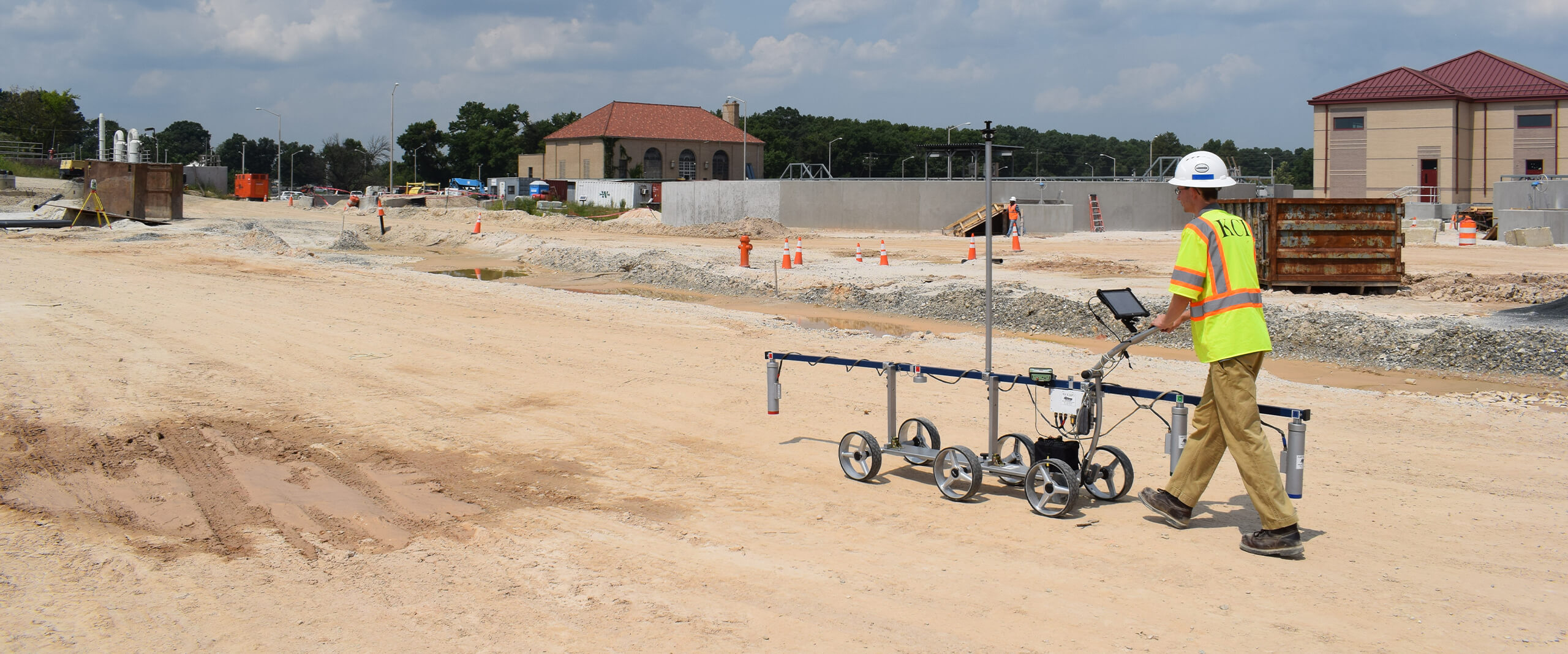How Geo Tech Engineers Can Address Common Soil Issues in Urban Advancement
How Geo Tech Engineers Can Address Common Soil Issues in Urban Advancement
Blog Article
The Interdisciplinary Approaches in the Geotechnical Sector: Bridging the Void In Between Design, Geology, and Environmental Scientific Research for Optimum Task End Results
The assimilation of design, geology, and ecological science within the geotechnical sector is not merely useful; it is necessary for attaining ideal task outcomes. This interdisciplinary partnership promotes an extensive understanding of facility site conditions, permitting for ingenious options to arise. By taking a look at essential roles and successful case studies, we can reveal the dynamic interplay that drives job success. Nevertheless, challenges continue to be in successfully taking care of these multidisciplinary efforts, increasing concerns regarding potential advancements and future trends. What techniques might arise to facilitate this crucial collaboration and boost the efficacy of geotechnical techniques?
Relevance of Interdisciplinary Partnership
The value of interdisciplinary collaboration in the geotechnical market can not be overemphasized. Effective geotechnical tasks call for the integration of diverse proficiency from numerous fields, consisting of engineering, geology, and environmental science. This cooperation makes sure that all elements of a job are considered, resulting in detailed options that attend to intricate challenges.
Interdisciplinary partnership fosters development by enabling professionals to share insights and techniques that may not be obvious when functioning in seclusion (tailings engineer). By leveraging the strengths of several techniques, groups can determine possible threats, enhance style processes, and improve the sustainability of geotechnical projects. Such collaboration advertises an all natural understanding of site-specific conditions, which is essential for precise evaluation and decision-making.
The complexity of geotechnical projects requires a worked with technique to problem-solving. Inevitably, interdisciplinary collaboration is vital for advancing best methods and accomplishing quality in the geotechnical market.
Key Duties of Each Technique
Partnership amongst numerous self-controls is not just useful; it is important for the successful execution of geotechnical jobs. Each technique-- design, geology, and ecological scientific research-- plays a distinct yet interconnected duty that adds to project effectiveness and sustainability.
Geotechnical designers are primarily liable for making foundations and making certain architectural integrity. They analyze dirt and rock residential properties to analyze load-bearing capabilities, providing essential data for risk-free building techniques. Their experience allows the formulation of innovative options to complicated challenges.

Ecological scientists evaluate the possible effects of construction on communities and water resources. They conduct environmental analyses and establish reduction methods to reduce damaging impacts. By integrating eco-friendly considerations, they ensure compliance with guidelines and advertise sustainability throughout the job lifecycle.
Study of Effective Integration
Effective combination of geotechnical disciplines can be exemplified through different instance studies that highlight the effectiveness of team effort in attending to intricate engineering obstacles. One remarkable example is the building of the Hong Kong-- Zhuhai-- Macau Bridge, where a collective approach including geotechnical design, geology, and environmental science was essential. Geologists and designers worked in unison to assess the seabed problems and maximize the structure design, guaranteeing stability and decreasing ecological effect.
Another impactful instance is the improvement of incline security in the San Francisco Bay Location, where an interdisciplinary team incorporated geotechnical evaluation with environmental assessments. By incorporating geological surveys and hydrological studies, the team effectively determined prospective landslide threats and implemented reliable mitigation actions, enhancing safety and security and sustainability.
Additionally, the redevelopment of Brownfield websites commonly requires a multidisciplinary method. In one instance in Chicago, cooperation amongst geotechnical designers, ecological scientists, and urban coordinators caused the effective removal of infected dirt, permitting the secure transformation of the website right into a community park. These study illustrate that interdisciplinary cooperation not just addresses technical obstacles however additionally fosters cutting-edge options that profit both communities and projects.
Challenges in Multidisciplinary Projects

Moreover, coordinating routines and operations among various groups can be bothersome, specifically when each self-control has unique job landmarks and deliverables. This imbalance can lead to hold-ups and boosted expenses. The challenge of resource allotment additionally impends big; guaranteeing that specific experience is offered at vital junctures calls for careful preparation and insight.
Lastly, regulatory conformity postures another considerable difficulty. Each technique may face different governing structures, and aligning these requirements to fulfill project purposes can be complex and time-consuming. Dealing with these difficulties demands solid management and reliable communication techniques to cultivate collaboration and guarantee that multidisciplinary teams function cohesively towards shared goals.
Future Trends in Geotechnical Practices
As the geotechnical industry progresses, emerging fads are reshaping practices to deal with the obstacles encountered in multidisciplinary tasks - consulting engineer. One significant pattern is the enhanced integration of innovative technologies, such as expert system and artificial intelligence, into geotechnical analysis and design. These innovations engineer of record improve anticipating modeling and risk evaluation, making it possible for designers to make more educated choices throughout the project lifecycle

In addition, the adoption of electronic twins and real-time tracking systems is ending up being much more prevalent. These tools facilitate recurring assessment of soil conditions and architectural efficiency, enabling timely interventions when issues occur.
Final Thought
In final thought, the integration of design, geology, and ecological scientific research is essential for attaining optimal end results in the geotechnical market. Interdisciplinary collaboration fosters innovation, boosts problem-solving capacities, and straightens technical demands with ecological sustainability. Successful study highlight the advantages of this strategy, while recognizing the difficulties dealt with in multidisciplinary jobs. Looking in advance, embracing these collective methods will certainly be necessary for browsing future trends and advancing the field of geotechnical design.
The assimilation of design, geology, and environmental scientific research within the geotechnical industry is not merely advantageous; it is necessary for achieving optimal task outcomes. Efficient geotechnical jobs call for the integration of varied know-how from numerous areas, consisting of design, geology, and environmental science.Navigating the complexities of multidisciplinary tasks in the geotechnical industry presents several substantial difficulties.As the geotechnical industry evolves, arising fads are improving techniques to attend to the difficulties dealt with in multidisciplinary jobs. Geotechnical designers are significantly collaborating with ecological scientists to make sure that projects line up with sustainability goals and conform with governing needs.
Report this page